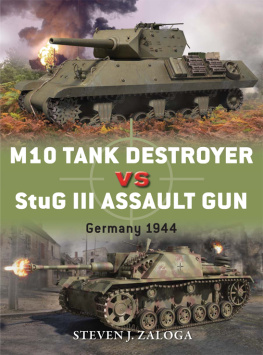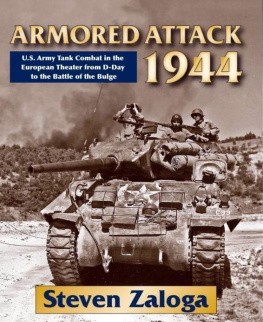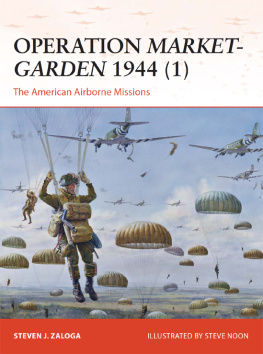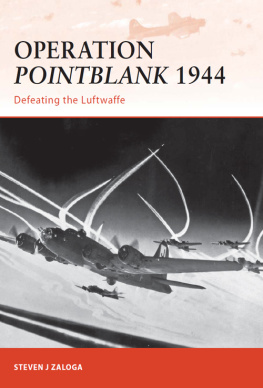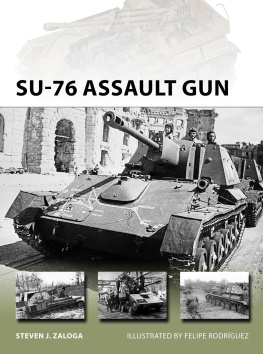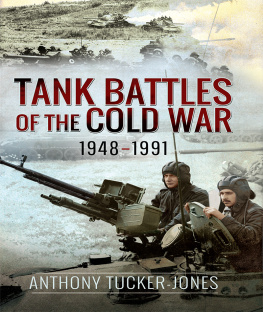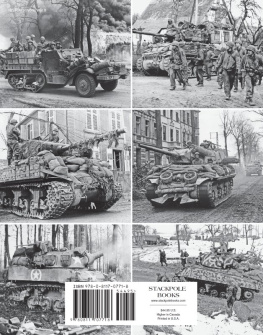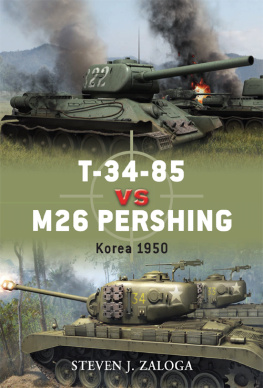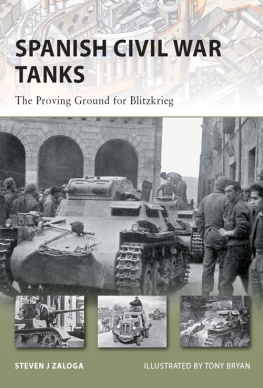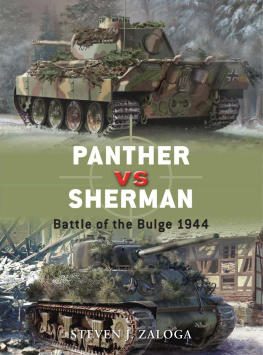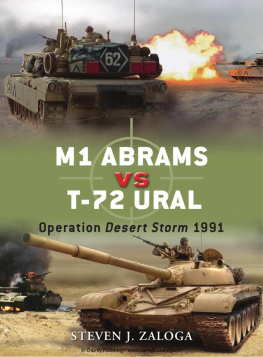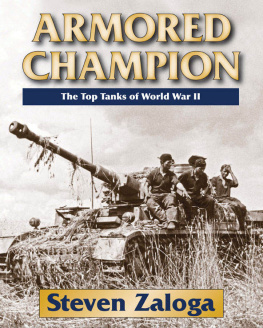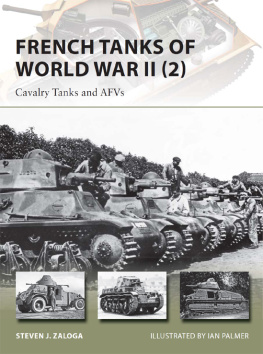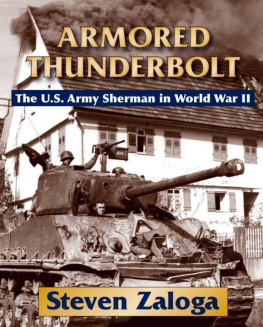INTRODUCTION
The Cold War never turned hot, so the intriguing question remains: How would NATO tanks have stacked up against Warsaw Pact tanks? Other conflicts, fought away from the main theater, may hint at the answer. Operation Desert Storm of February 1991 provided a fascinating example of modern US versus Soviet-built tanks in action. This conflict was not a perfect surrogate for a NATOWarsaw Pact clash since the latter had better tanks than the Iraqi T-72M1 and Warsaw Pact crews were probably better that the average Iraqi tank crews. Nevertheless, close examination of these tank battles provides an intriguing look at the state of tank technology and tank warfare at the end of the Cold War.
Desert Storm was not the first war which pitted US against Soviet equipment. The first significant clash occurred in Korea in 1950 when the North Korean Army spearheaded their attack on South Korea using Soviet-supplied T-34-85 tanks, and the US-led intervention involved M4A3E8, M26 and M46 tanks. Although the North Korean T-34-85 tanks proved to be highly effective in the initial invasion when faced with poorly trained South Korean infantry, once they were challenged by US Army tanks they suffered massive losses. The reasons were far less to do with the technology of the opposing tank types, which was fairly similar, but instead it was primarily crew quality which made the difference. The US crews were better trained than their North Korean opponents, and this core issue of crew competence would resonate through many later Cold War tank battles.
The 1956 war between Israel and Egypt involved tank combat between US-built Sherman tanks and Czechoslovak-supplied T-34-85 tanks, and once again the results were heavily dependent on crew quality. The 1967 Six-Day War saw the first major clash involving tanks developed after World War II. The Israel tank units largely relied on the British Centurion and US M48A2 Patton tanks while the Egyptian and Syrian forces used Soviet T-54 and T-55 tanks. However, the tank battles were one-sided in favor of Israel even when Israeli units used modified Sherman tanks, and the importance of crew performance was demonstrated especially clearly when Israeli Shermans successfully confrontated the modern Jordanian M47 and M48 tanks. The 1973 ArabIsraeli War saw yet another generation of Cold War tanks put to the test, in this case the US M60A1 and the new Soviet T-62. The results of this conflict were not as lopsided as some of the earlier wars, though ultimately, the Israeli tanks exacted a punishing kill-ratio against their opponents.
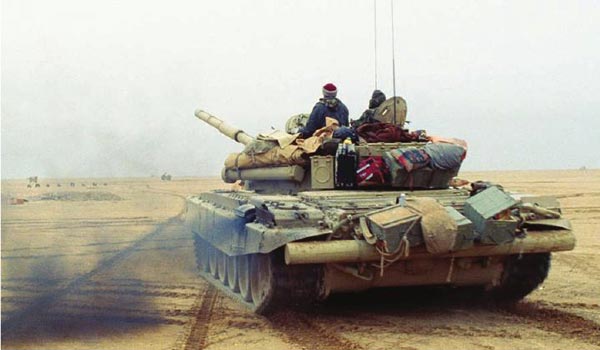
The T-72 became the standard license-produced Soviet tank in the 1980s in Poland, Czechoslovakia, India, and Yugoslavia. Iraq was not the only army to use the T-72 in the 1991 war. The Kuwaiti 35th Fatah Brigade operated the Yugoslav-built M-84A version as part of the Joint Coalition Force Group. (US DoD)
These wars could not provide an entirely accurate model for a potential NATO Warsaw Pact tank confrontation due to differences in terrain, tactics, training and many other factors. But time after time, they suggested that the ultimate factor in deciding the outcome of tank combat was crew performance and not tank technology. The technical balance between NATO and Warsaw Pact tanks through most of the Cold War was close enough that it could not alone determine the outcome of tank fighting. This book will argue that the same was true about Operation Desert Storm. But it will also argue that Desert Storm provided an example where there was not only a clear advantage in crew quality on one side, but that there was a much greater technical disparity than was the case in most of the previous clashes.
The American M1A1 Abrams, German Leopard 2, British Challenger, and Soviet T-72 and T-80 were the ultimate tank designs of the Cold War years, and still have not been replaced by a new generation of tanks. Indeed, there is some question whether they will be replaced in the foreseeable future, since they continue to be viable battlefield contenders so long as they are well maintained and regularly updated. In recent years the focus has instead been on the adoption of a new generation of lightly armored wheeled vehicles that are more economical for peacekeeping operations rather than high-intensity combat.
The M1A1 Abrams tank represented the culmination of a number of technological trends in the 1960s and 1970s, which included the introduction of a new generation of digital electronics. This provided substantially better accuracy at long range, the ability to fire on the move, and significantly improved capabilities to see at night and through smoke and fog. (GDLS)
Several features distinguished the M1A1/T-72 generation from previous generations of tanks. In terms of firepower, these tanks represented the final switch to the use of APFSDS (armor-piercing, fin-stabilized, discarding-sabot) ammunition (simply termed sabot in the US Army) for tank fighting. While APFSDS had already been used by previous generations of tanks, HEAT (high explosive anti-tank) ammunition had remained the predominant type in NATO and Warsaw Pact use through the 1970s. APFSDS began to attract serious attention due to its extensive use by Syrian and Egyptian T-62 tanks in the 1973 ArabIsraeli War. The final triumph of APFSDS was due in part to advances in ammunition technology, but also 6 to improvements in fire-control systems that gave APFSDS a level of accuracy resembling that of rivals such as guided tank projectiles. Both the M1A1 Abrams and the T-72 relied on APFSDS as their primary tank-fighting ammunition at the time of Operation Desert Storm.
The greatest disparity between the M1A1 Abrams and the T-72M1 was not in actual gun performance but rather in gun fire-control. The Abrams used a far superior FLIR (forward-looking infrared) thermal-imaging sight while the T-72 relied on the older and less versatile active infrared technology for night vision. The ultimate rule in tank fighting has always been see first, fire first, hit first. It was the thermal sights on the M1A1 that provided the crucial combat edge in Operation Desert Storm, since US tanks could spot and engage Iraqi tanks before the US vehicles could be seen. Iraqi tanks suffered another significant disadvantage in 1991 in that they were supplied with inferior ammunition a generation behind that used by the Russian army of the time.
In terms of armor, the M1A1/T-72 generation marked a distinct turning away from homogenous steel armor towards laminate armor. Laminate armor had been used since the 1960s in the glacis plates (the heavily armored sloping front of a tanks hull) of Soviet designs such as the T-64, but it had taken some time for armies to be convinced that laminate armor was worth the trouble compared to conventional steel armor. The M1A1 and T-72 provide some important clues to the advantages of the new generations of armor and their value on the modern battlefield. In this respect, the M1A1 held a critical edge over the export T-72M1, which had armor inferior to that of the Russian armys contemporary T-72B tank.
There was also an important contrast between the T-72 and M1A1 in terms of propulsion. At the time of these tanks design there was heated debate about the relative value of conventional diesel engines against the new generation of gas-turbine engines. In the Soviet case both engine types were utilized the T-72 had a diesel engine, the T-80 a gas-turbine one. The US M1A1 was powered by a gas turbine, but this remained one of the most controversial features of the tank. Operation Desert Storm did not silence this debate, despite the outstanding performance of the Abrams.


